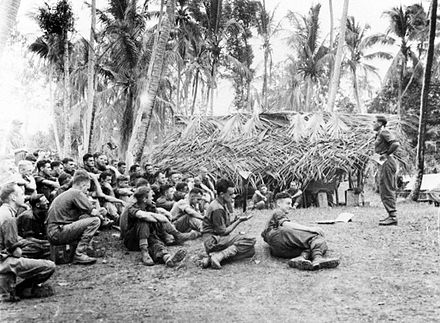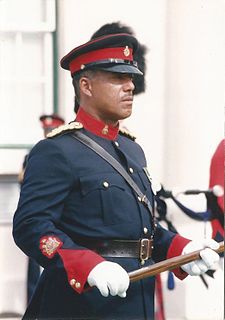
Warrant officer (WO) is a rank or category of ranks in the armed forces of many countries. Depending on the service or historical context, some WOs are classified as the most junior of the commissioned ranks, the most senior of the NCO ranks or in a separate category of their own. However, warrant officer ranks are always senior to non-commissioned officer (NCO) ranks and subordinate to commissioned officer ranks. WO ranks are especially prominent in the militaries of Commonwealth nations and the United States.

A non-commissioned officer (NCO) is a military officer who has not earned a commission. Non-commissioned officers usually obtain their position of authority by promotion through the enlisted ranks. In contrast, commissioned officers usually enter directly from a military academy, Officer Candidate School (OCS), or Officer Training School (OTS) after receiving a post-secondary degree.
Lance corporal is a military rank, used by many armed forces worldwide, and also by some police forces and other uniformed organisations. It is below the rank of corporal, and is typically the lowest non-commissioned officer, usually equivalent to the NATO Rank Grade OR3.
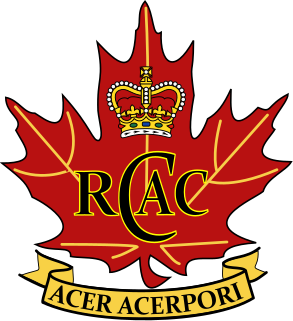
The Royal Canadian Army Cadets is a national Canadian youth program sponsored by the Canadian Armed Forces and the civilian Army Cadet League of Canada. Under the authority of the National Defence Act, the program is administered by the Canadian Armed Forces and funded through the Department of National Defence. Additionally, the civilian partner of the Royal Canadian Army Cadets, the Army Cadet League of Canada, also ensures financial, accommodations and transportation support for RCAC programs and services at a community level.
An aviator badge is an insignia used in most of the world's militaries to designate those who have received training and qualification in military aviation. Also known as a Pilot's Badge, or Pilot Wings, the Aviator Badge was first conceived to recognize the training that military aviators receive, as well as provide a means to outwardly differentiate between military pilots and the “foot soldiers” of the regular ground forces.
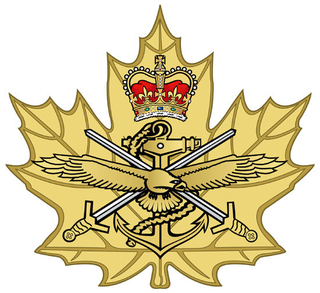
The Cadet Instructors Cadre (CIC) Branch consists of approximately 7,500 Canadian Forces (CF) officers whose primary duty is the safety, supervision, administration and training of Royal Canadian Sea, Army, and Air Cadets. The Branch is the largest single group within the Canadian Forces reserve force subcomponent Cadet Organizations Administration and Training Service (COATS) and is the largest officer branch in the Canadian Forces. The COATS subcomponent of the Reserve Force employs members from all branches and occupations of the Royal Canadian Navy, Canadian Army, and Royal Canadian Air Force of the Canadian Forces.

A parachutist badge is a military badge awarded by the armed forces of many states to soldiers who receive the proper parachute training and accomplish the required number of jumps. It is difficult to assess which country was the first to introduce such an award.

The Australian Army Training Team Vietnam (AATTV) was a specialist unit of military advisors of the Australian Army that operated during the Vietnam War. Raised in 1962, the unit was formed solely for service as part of Australia's contribution to the war, providing training and assistance to South Vietnamese forces. Initially numbering only approximately 30 men, the size of the unit grew several times over the following years as the Australian commitment to South Vietnam gradually grew, with the unit's strength peaking at 227 in November 1970. Members of the team worked individually or in small groups, operating throughout the country from the far south to the Demilitarized Zone (DMZ) in the north. Later they were concentrated in Phước Tuy Province as Australian forces prepared to withdraw from Vietnam. It is believed to be the most decorated Australian unit to serve in Vietnam; its members received over 100 decorations, including four Victoria Crosses, during its existence. The unit was withdrawn from Vietnam on 18 December 1972 and was disbanded in Australia on 16 February 1973. A total of 1,009 men served with the unit over a period of ten years, consisting of 998 Australians and 11 New Zealanders.

An aircrew flying badge is the badge worn on the left breast, above any medal ribbons, by qualified aircrew in the Royal Air Force, Royal Navy, British Army, Indian Air Force, Pakistan Air Force, Royal Canadian Air Force, Royal Australian Navy, Australian Army, Royal Australian Air Force, Royal New Zealand Air Force, South African Air Force and Sri Lanka Air Force. An example of a real Pilot Brevet is as opposite:
Like the British Army, the Australian Army does not use the term 'enlisted' to describe its non-commissioned ranks. Instead, personnel who are not commissioned officers are referred to as other ranks. These are soldiers, non-commissioned officers (NCOs) and warrant officers (WOs). Warrant officers are appointed by a warrant which is signed by the Chief of the Army. The insignia for non-commissioned ranks are identical to the British Army up to the rank of warrant officer class two. Since 1976, WO1s and the WO in the Australian Army wear insignia using the Australian Coat of Arms.
The Royal Army Educational Corps (RAEC) was a corps of the British Army tasked with educating and instructing personnel in a diverse range of skills. On 6 April 1992 it became the Educational and Training Services Branch (ETS) of the Adjutant General's Corps.

Air University is a professional military education university system of the United States Air Force. It is accredited by the Commission on Colleges of the Southern Association of Colleges and Schools to award Master's Degrees.

The Royal Australian Engineers (RAE) is the Military engineering corps of the Australian Army. The RAE is ranked fourth in seniority of the corps of the Australian Army, behind the Staff Cadets, Armoured and Artillery Corps. The corps was formed by the amalgamation of the various colonial engineer corps of the states and territories of Australia in 1902 and since then has served in various conflicts including World War I, World War II and the Vietnam War. The corps has also served on numerous peacekeeping operations and was heavily involved in the Australian contribution to the war in Afghanistan.

Australian Army Aviation (AAAvn) is a corps of the Australian Army. It was formed on 1 July 1968, although it has a history dating back to 1911, when the Minister of Defence at the time, Senator George Pearce, decided there should be a flying school in the Defence Department. The motto of the Australian Army Aviation corps is Vigilance.
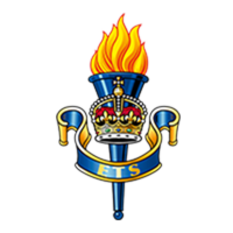
The Educational and Training Services form part of the Adjutant General's Corps and have done since 1992 when this Corps of the British Army was formed. Their remit is to continue the general education of soldiers and officers alike, as well as the actual military training of the soldiers of the Army.
The Land Warfare Centre (LWC) is an Australian Army training establishment that is responsible for the provision of promotion courses to commissioned and non commissioned officers (NCOs) in an "all corps" setting. It was originally established during World War II at Canungra, Queensland, as the Jungle Training Centre to prepare troops for combat in the South West Pacific Area. During the 1950s and 1960s, the centre fulfilled a similar role, but since then has evolved to provide a broader spectrum of training courses with detachments at a number of bases across Australia.

The term Enlisted Professional Military Education (EPME) is a general term used by all branches of the U.S. Armed Forces to describe the formal system of education each branch provides to its enlisted personnel. Each branch has its own system and sequence of courses, with the overall focus on leadership and management. Education generally increases in intensity and level of knowledge as individuals progress in rank and assume broader leadership roles. EPME is distinct from the technical training service members receive for their Military Occupational Specialty (MOS), Air Force Specialty Code (AFSC), or Navy Rating.
The development and implementation of the Special Assistance Program in Victorian Primary Schools during the period 1979 - 1982 constituted the most significant innovation in the provision of special education services to children experiencing learning difficulties and in addressing declining literacy and numeracy standards. Up until the political directive to initiate this program was given, there had been no policy within the Department of Education and Early Childhood Development directing Principals of Primary Schools to develop special programs for pupils at risk of illiteracy and innumeracy.
The establishment of the Special Assistance Program in Victorian Primary Schools was the most significant development in remedial education in Australia. It was a Hamer Liberal Government initiated strategic plan designed to address falling literacy and numeracy standards. The totally new component of the Special Assistance Program was the provision of 1000 Special Assistance Resource Teachers (SARTs) for the delivery of services to children with learning needs. These designated teachers were also given an on-site school responsibility for facilitating a productive relationship between parents and pupils and teachers. The program involved the training of these primary teachers as SARTs and their placement in schools. Their role was the early detection and remediation of children at risk of illiteracy and innumeracy. The position was the focus of this substantial change in the delivery of special educational services to children at risk of illiteracy and innumeracy. The role incorporated all the elements of services previously performed by external consultants visiting schools.

The 1st Air Support Group of the Puerto Rico State Guard (1ASG-PRSG) — is the main unit of the State Guard of the Military Forces of Puerto Rico that operates under the sole authority of the governor of Puerto Rico who, in turn, delegates such authority to the Puerto Rico Adjutant General and to the Commanding General of the Puerto Rico State Command.

